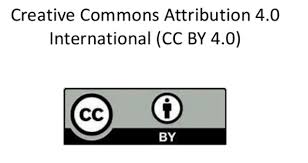5. Effects of zinc on growth and yield of rice cv. BRRI dhan29 under alternate wetting and drying water management practice
DOI:
https://doi.org/10.47440/JAFE.2021.2305Keywords:
Rice, Zinc, Alternate wetting and drying, Continuous floodingAbstract
Insufficient zinc (Zn) and water are key concerns in agricultural production, resulting in lower yields and nutritional qualities. The goal of the study was to figure out how water management and Zn application rates affect the growth and yield of rice. The experiment was carried out in a split-plot design with three replications. The treatments consisted of two factors, a) water management, like 1) Continuous flooding (CF) and 2) Alternate wetting and drying (AWD) system and b) Zn application like 1) Control (0% Zn), 2) 75% Zn, 3) 100% Zn, 4) 125% Zn, and 5) 150% Zn of the recommended dose. All the plots received an equal amount of NPKS fertilizers. The application of Zn in both AWD and CF systems had a significant effect on a number of grains panicle-1, 1000 grain weight and grain yield. The highest value for both yield contributing traits and yield was obtained by the application of 150% Zn in the AWD system. However, the lowest value was found in the control treatment of the CF system for both the yield components and yield. It is also evident that the growth rate of yield components and yield was increased with increased doses of Zn in both AWD and CF systems. In Bangladesh, farmers involved in rice cultivation may be benefited following the treatment of 150% Zn and AWD irrigation systems.





 Publisher: Society of Agriculture, Food and Environment | ISSN (Online Version): 2708 - 5694
Publisher: Society of Agriculture, Food and Environment | ISSN (Online Version): 2708 - 5694 